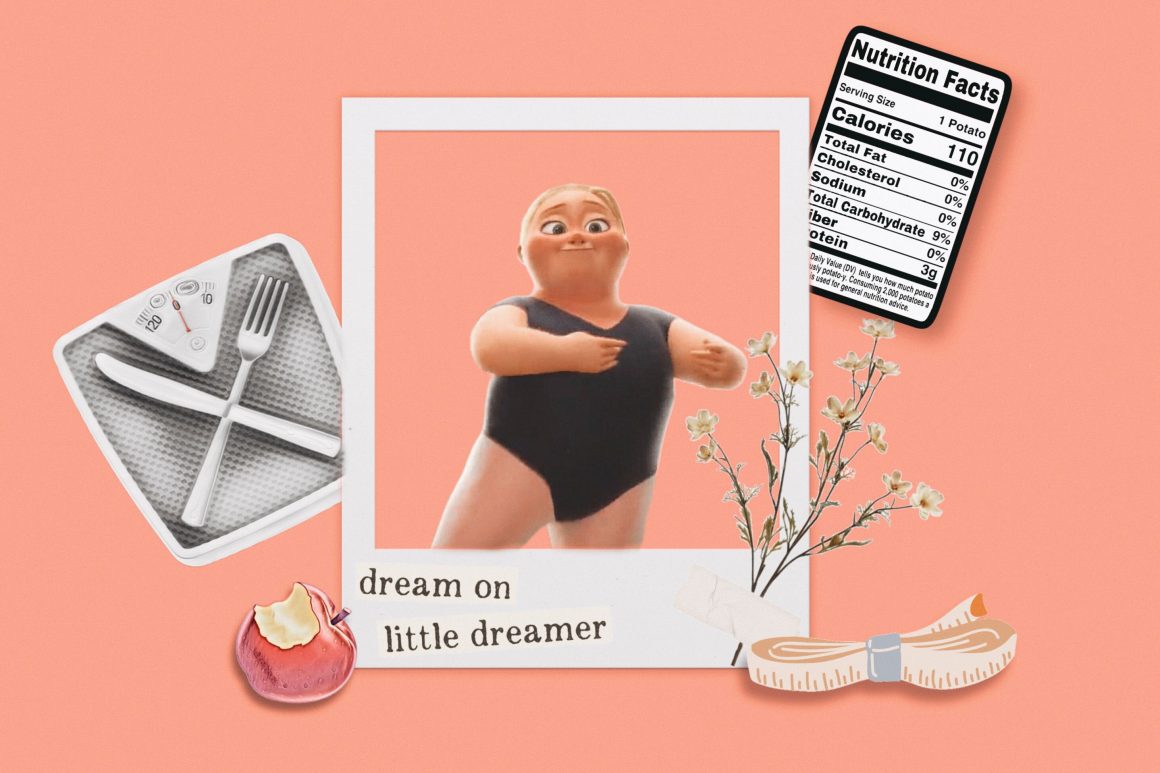
Disney takes on body inclusivity in its latest short film
By Jillian Cung, November 24 2022—
Disney’s new short film Reflect reveals the media giant’s first-ever plus-sized heroine in a film about body dysmorphia. The story centers around Bianca, who feels out of place in her ballet class and worries she is lesser than her classmates. Battling her reflection, she channels her inner strength to help overcome her self-doubt by immersing herself in dance.
The film comes out during a time when many people are struggling with body image issues. There has been a rise in body image problems for both women and men in the midst of COVID-19, with many fitness gurus calling on people to shed their “COVID-19,” with the number alluding to the number of pounds one needs to lose. The pandemic has shown that without routines that help control and maintain habits, people are stressed, resulting in their mental health becoming more vulnerable to coping mechanisms like food. While many battle issues of body dysmorphia, fashion trends such as low-rise jeans make it apparent that clothing trends that cater to thinner bodies are becoming more popular than ever.
The beginning of the film starts with an interview with Hillary Bradfield, the director of Reflect.
“When people watch the short, I hope they feel more positively about themselves,” says Bradfield, asserting that this is what she wishes for audiences.
Although I don’t think my body image improved after watching the film, I found it comforting. Having a plus-size heroine immerse audiences in a six-minute short film was a nice change of pace compared to the stereotypical representations of dancers who are often very thin.
As a young child, I participated in dance and figure skating. Even as young as seven years old, I could feel there was a pressure to maintain thinness in both of these fields and, during that time, it was underheard to have media representations of larger bodies, especially as dancers or figure skaters. I think my younger self would have really appreciated seeing characters like Bianca, especially considering how many dancers are at risk of developing body dysmorphic disorder (BDD) and eating disorders (ED).
“The lifetime prevalence of BDD and ED among elite professional female ballet dancers was higher than the general population,” a 2012 study explained. “High standards of beauty, public body exposure, and repeated exposure to mirrors in the rehearsal rooms may contribute to the development of body image disorders in this sample.”
Thinness within the dance community has constantly been ingrained into its culture.
“This standard of the thin body as a dance ideal has been passed down from generation to generation,” adds Josh Spell, a former dancer and a mental health consultant for Pacific Northwest Ballet.
Considering the prevalence of BDD and ED among elite professional female ballet dancers, it illustrates the need for body inclusivity, not just in media representations but in every facet of our daily lives. Thinness as a beauty ideology is deeply integrated into our culture, which is illustrated in how we navigate language. In English we avoid saying the word “fat” at all costs, instead preferring other euphemisms such as larger-bodied, bigger, hefty, bulky, plump, etc. We are taught to avoid the word “fat” like it’s an insult and the avoidance of the word insinuates “fat” has a negative connotation and should not be used. Our culture has turned a simple descriptor into a violent insult because of our hatred of fatness and obsession with thinness. Policing fatness is how we keep people desiring thinness, ultimately maintaining the beauty standard that rewards thin bodies and ostracises fat ones.
There is yet to be a Disney princess with a plus-size frame — why is Disney hesitating? The success of larger bodies on screen is apparent with Luisa Madrigal being a fan favourite in Disney’s Encanto. Luisa Madrigal is only a supporting character and Bianca, a plus-sized main character is only given enough screen time for a six-minute short. Not only is Bianca only given six minutes of screen time, but Disney fails to acknowledge intersectionality when exploring new concepts in their films. Of course, Disney cannot show every marginalized experience, however, larger bodies are not just White and female either. Disney is copping out of an opportunity to provide positive representations of bigger bodies on screen for children.
There is a wide range of body types, and just because mainstream media refuses to provide accurate representation does not mean they stop existing in our everyday lives. Bianca from Reflect acts as a positive body diversity representation for children because it is one step closer to normalizing larger bodies on screen and helps dismantle the high expectation of thinness.
This article is a part of our Voices section and does not necessarily reflect the views of the Gauntlet editorial board.
